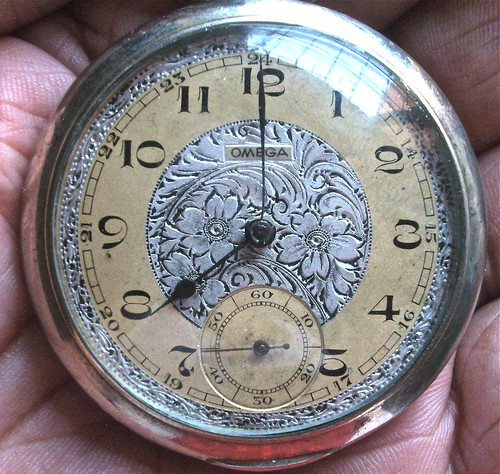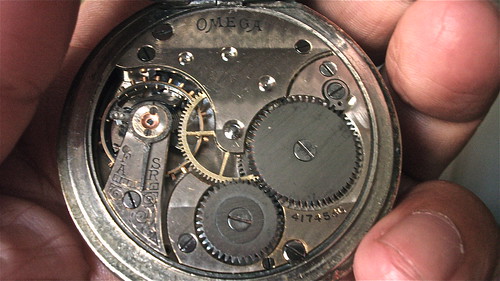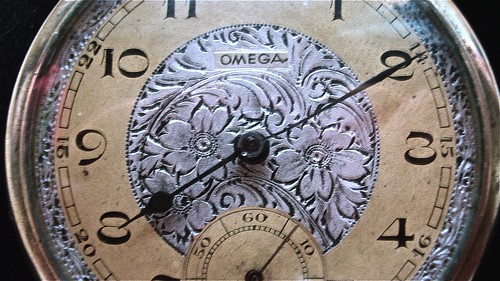Both my Mom and Dad are safe and healthy although traumatized by the whole thing. Mom gets very emotional and nervous every time it starts to rain which is understandable considering that both she and my Dad had to be rescued from the roof of their home.
Thanks to the efforts of everyone, my parent's home has been repaired and refurnished. So all things considered despite these setbacks, there is still much to be thankful for.
I have once again resumed "hunting" for vintage Omega watches. I recently got this Omega 1910 cal 19 Lepine pocket watch. Movement serial number dates this to 1910. Features an art nouveau dial with fancy arabic numerals with blued steel Poire hands. The dial features an engraved central floral decoration in relief with Omega logo on a cartouche. Has 13 to 24 markings in outer track dial with zones with a floral motiff border and recessed small seconds.
The best part is the watch is run by the famous cal 19, called the Omega caliber. Considered as the last word in watchmaking technology when it was first released in 1894, the movement was such a success that its name became the official company name in 1903. Picture below of the Cal. 19 movement after being cleaned by the Omega Service Center:
Closer view of the dial's art work below:
The Omega techs who worked on the watch, examined the dial and under magnification saw:
- the cartouche on which the word OMEGA is printed on matches the same color of the dial, i.e. same yellow/gold shade
- the rectangular cartouche where the OMEGA word is printed is also in relief over the floral relief pattern; i.e the rectangular shape is not painted but etched on the dial (hope I'm making sense and describing this correctly)
I posted about this watch in one of the international horological forums and one of the members raised an interesting point regarding the font used for the Omega appellation. He pointed out that the font style of the word, "Omega" was used much later than 1910.
I have a copy of Richon's, "Omega, A Journey Through Time" and pictures of the pocket watches shown for the early 1900s use a different font. This font type used during this period is the one found on the movement inside this particular pocket watch. Pictures of the ads from the early 1900s period also used a different font except for one 1908 Spanish ad which uses the font type found on the dial of this watch. Pictures in the book also showed that the font used on this pocket watch's dial is found in pocket watches from the 1930s period.
So it would seem that the bulk of the records on hand would tend to support the point raised by one of the members that the dial may possibly be from the 1930s.
Regarding the style of the dial, the pictures from the book showed that Omega did produce art nouveau dials in the early 1900s featuring engraved central decorations in relief. In Richon's book, I did find a picture of a 1929 wristwatch with a dial design that closely resembled the one found on my pocket watch.
So what we have on hand is the following data:
- Movement is an Omega Cal 19 from around 1910. This info was what was indicated in the service invoice that the Omega center gave me when they took in the watch for servicing.
- Chrome steel case with Omega hallmarks and case no. which would date this to around 1907
- Dial with Omega appellation using a font that was commonly applied in the 1930s.
It is possible that the original dial had to be replaced at a later period which would explain why a 1910 watch would have a 1930s dial.
It would be interesting to find out the provenance of this watch: Who was the original owner? How did it end up here in Manila? Why did the owner change the dial? How many owners hands did this watch pass through before finally ending up with me? Unfortunately we would never really know...



No comments:
Post a Comment